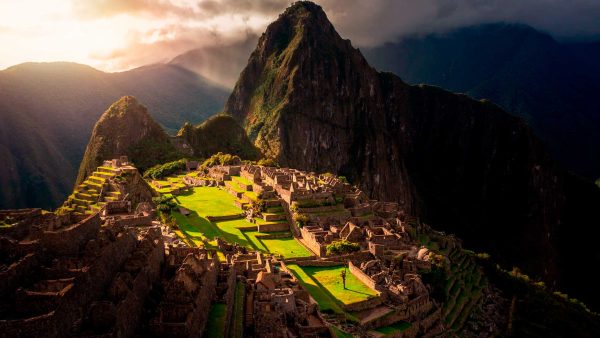Since ancient times, civilizations have left their mark on the earth, creating symbols, figures, and visual stories that have survived through the ages. Among the most astonishing manifestations of this legacy are geoglyphs and petroglyphs, two forms of rock art that offer us a window into the cultures and beliefs of our ancestors. Although they are often confused, these two types of art are remarkably different, both in their method of creation and their cultural significance. ¿But what truly sets them apart, and why do they continue to fascinate archaeologists and travelers alike to this day? P
Table of Contents

Geoglyphs, like the famous Nazca Lines in Peru, are immense figures etched directly into the ground, visible only from above. They depict animals, human figures, and complex geometric shapes that have baffled modern understanding regarding their origins and purpose.
In contrast, petroglyphs are carvings engraved into rock surfaces, often found at archaeological sites worldwide, narrating stories of daily life, religious rituals, or mystical beliefs. While geoglyphs spread across vast expanses of land, petroglyphs invite us to explore up close the intricate details that our ancestors carved into stone with rudimentary tools.
This rock art not only reflects the creativity of ancient cultures but also reveals essential aspects of their way of life, religious beliefs, and relationship with the natural environment. It is a visual language that, although enigmatic, remains a powerful testament to humanity’s rich history.
If you’re ready to explore this fascinating universe and uncover the key differences between geoglyphs and petroglyphs, this article will take you on a journey through ancient landscapes, revealing the mysteries and artistic legacy our ancestors left behind over time.
Are you prepared to unravel the secrets of rock art? Keep reading and embark on an adventure into the oldest symbols of humanity. Discover how these incredible artistic expressions continue to captivate explorers and scholars around the world!
¿What Are Geoglyphs and Petroglyphs?

Rock art, a legacy of ancient civilizations, has left us with two impressive manifestations: geoglyphs and petroglyphs. While both are forms of artistic expression carved into nature by our ancestors, their fundamental differences lie in their method of creation and cultural purpose. This fascinating ancient art continues to intrigue archaeologists and travelers alike, revealing hidden aspects of the civilizations that created them. Below, we’ll explore what they are, how they differ, and some notable examples that can still be observed in South America.
Definition of Geoglyphs: Giant Drawings on the Ground
Geoglyphs are enormous figures drawn directly on the earth’s surface, which can only be fully appreciated from an aerial view. These figures, like the renowned Nazca Lines, include representations of animals, human figures, and geometric symbols, sparking theories about their religious or astronomical function. Often, these figures were created by scraping away the topsoil to reveal lighter-colored layers underneath, creating visible contrast.
Definition of Petroglyphs: Carvings and Engravings in Stone
On the other hand, petroglyphs are carvings or engravings made directly into rock surfaces using primitive tools. This form of rock art was used to convey stories, religious beliefs, or significant events. Unlike geoglyphs, petroglyphs are found on accessible rock formations, inviting visitors to discover and touch the marks left by ancient cultures. In many cases, these carvings depict scenes of daily life or ritual significance, connecting us to the lives and beliefs of those times.
Key Differences Between Geoglyphs and Petroglyphs
Methods of Creation: Scraping vs. Carving
One of the main differences between these two forms of rock art is the method of creation. Geoglyphs are formed by scraping or removing surface stones to expose lighter layers of soil. This method allowed the creation of gigantic figures that have stood the test of time and can only be viewed from above. Petroglyphs, on the other hand, are the result of carving and engraving into rock surfaces, using rudimentary stone tools to create intricate designs.
Cultural Purposes and Meanings
The purposes of these works vary depending on the culture that created them. Geoglyphs, like the Nazca Lines, may have had astronomical or ceremonial purposes, being visible only from the sky. It is believed they were rituals dedicated to the gods or guides for the stars. In contrast, petroglyphs appear more closely linked to communication and documentation of daily life, religious ceremonies, and local myths. Often, these engravings served as a kind of “visual language” that conveyed the beliefs and values of ancient communities.
Famous Examples of Geoglyphs and Petroglyphs
The Nazca Lines: The Most Enigmatic Geoglyphs

Undoubtedly, the most famous geoglyphs in the world are the Nazca Lines, located in the southern desert of Peru. These gigantic figures, which include representations of animals like the monkey and the hummingbird, as well as geometric shapes, have baffled scientists and tourists for decades. The precision and size of the lines remain a mystery, sparking theories about their connection to astronomy, religion, and even extraterrestrials.
The Toro Muerto Petroglyphs: ¿A Secret Language of the Ancients?

Located in Arequipa, Peru, the Toro Muerto petroglyphs are one of the largest and most fascinating petroglyph sites in South America. This site contains thousands of rock carvings dating back more than 1,000 years, depicting anthropomorphic figures, animals, and geometric symbols. Some experts believe they may have been part of a secret language of the region’s ancient inhabitants, used to narrate myths or significant events.
The Pusharo Petroglyphs: Mysterious Art in the Peruvian Jungle

In the remote jungle of Madre de Dios, Peru, lies the Pusharo petroglyphs, an enigmatic archaeological site that has puzzled explorers. These carvings include complex geometric figures, hands, and other symbols that seem to have a ritual or religious function. Surrounded by dense jungle, the Pusharo petroglyphs are wrapped in mysteries that modern science has yet to fully decipher.
Other Geoglyphs and Petroglyphs in South America
Beyond the Nazca Lines and the mentioned petroglyphs, South America is home to a vast wealth of sites with geoglyphs and petroglyphs. In northern Chile, the Pintados and Atacama geoglyphs are impressive examples of pre-Columbian art, while petroglyph sites can be found scattered across the continent, from Colombia to Bolivia, each revealing a unique story of ancient civilizations.
Archaeological Importance of Rock Art
Rock art is a fascinating window into the past, a tangible link to ancient civilizations that allows us to better understand their cultures, beliefs, and ways of life. Geoglyphs and petroglyphs are two prominent forms of this art, and their study is crucial to deciphering human history. In this section, we will explore the archaeological importance of these manifestations, revealing their meaning and what they can teach us about the civilizations that created them.
What Geoglyphs Reveal About Ancient Civilizations
Geoglyphs, like the iconic Nazca Lines in Peru, are more than simple drawings on the ground; they are testimonies of the beliefs, practices, and astronomical knowledge of the ancient civilizations that created them. These gigantic markings, visible primarily from the air, suggest an advanced understanding of geometry and astronomy.
Recent studies indicate that many of these figures were aligned with significant astronomical events, implying that their construction required meticulous planning and a deep knowledge of celestial movements. Additionally, geoglyphs may have served ceremonial purposes, acting as pathways to rituals or offerings to the gods. By analyzing these impressive monuments, archaeologists are uncovering not only the construction techniques of ancient cultures but also their worldview and connection to the natural environment.
Petroglyphs as Records of Prehistoric Life and Beliefs
Petroglyphs, on the other hand, are rock carvings that offer a direct glimpse into the daily lives and beliefs of prehistoric cultures. These inscriptions speak to the relationship between communities and their environment, their agricultural practices, rituals, and myths. Through petroglyphs, researchers can reconstruct the diet, social activities, and spiritual beliefs of these societies.
Each figure carved into the stone has a story to tell, from representations of animals and human figures to abstract symbols that may reflect spiritual experiences or significant events. The study of petroglyphs reveals patterns of migration, climate change, and the evolution of beliefs over time, providing valuable context for understanding human history.
Don’t Miss the Opportunity to Explore These Fascinating Archaeological Sites!
Geoglyphs and petroglyphs are more than simple artistic expressions; they are profound footprints left by the civilizations that came before us. Through these amazing monuments and carvings, we gain invaluable insight into the lives, beliefs, and knowledge of our ancestors. From the enigmatic Nazca Lines, which speak to a vast astronomical understanding, to ancient petroglyphs that document stories of life and sacred rituals, each of these symbols connects us with the past in a way few other forms of art can achieve.
The importance of studying and preserving these archaeological sites is essential. Not only does it help us understand how ancient cultures lived and thought, but it also teaches us about the diversity of human heritage and our relationship with nature and the cosmos. Each line and carving is a piece of a puzzle that, when put together, forms a clearer picture of human history.
If you are passionate about history and want to delve deeper into the fascinating world of geoglyphs and petroglyphs, now is the time to act. ¡Don’t miss the opportunity to visit these iconic sites and experience history firsthand!
¡Book your tour in Peru today and embark on a unique adventure! that will take you through time, allowing you to uncover the mysteries of the ancient civilizations that left their mark on the earth and rock.




